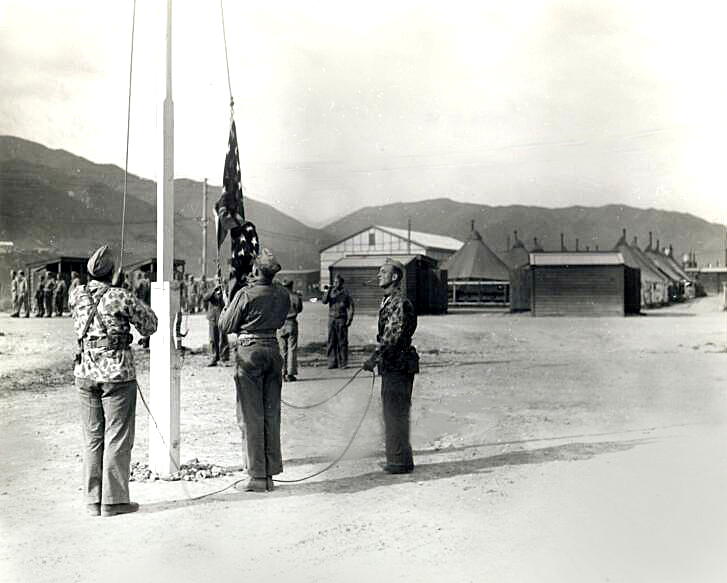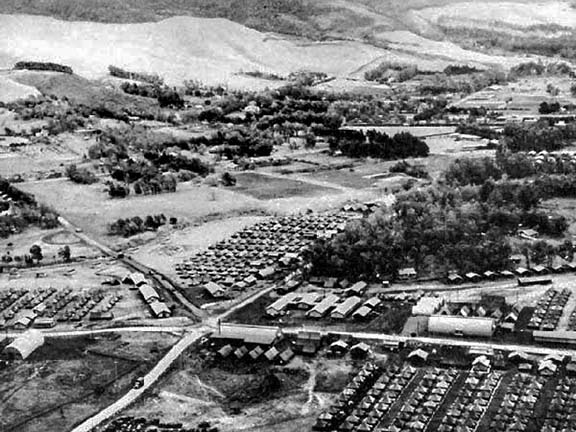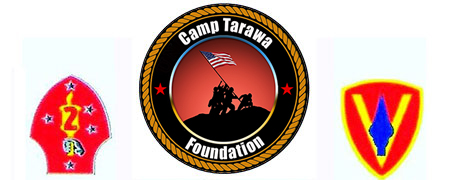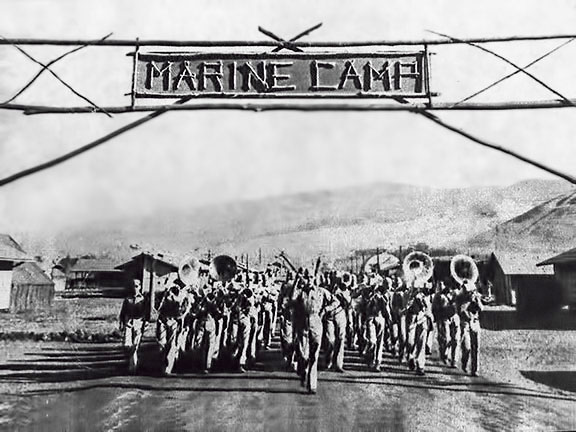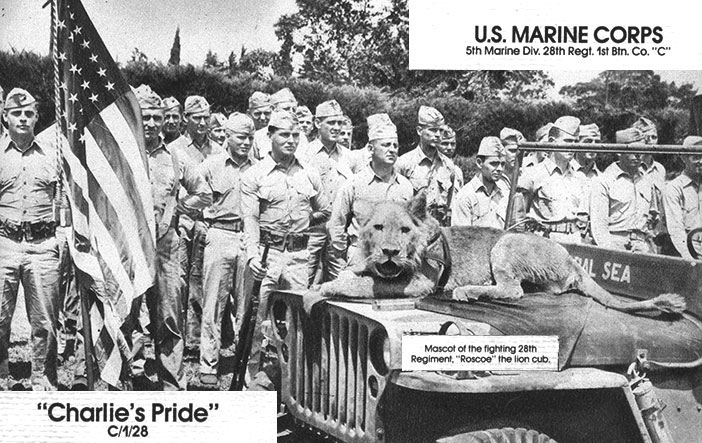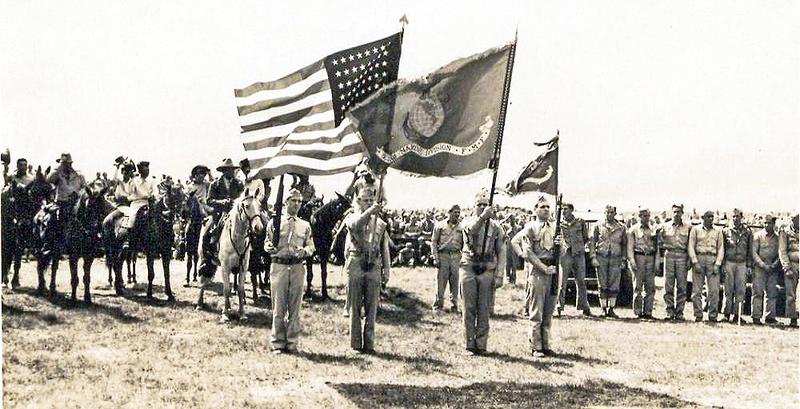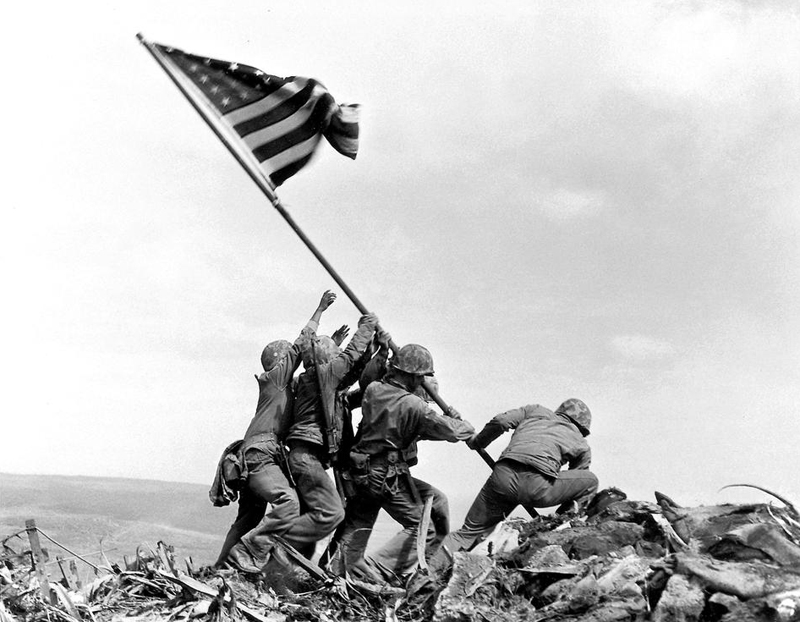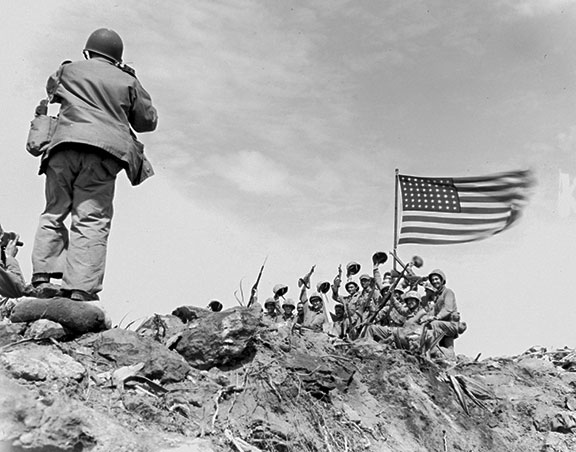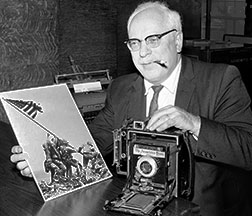The Camp Tarawa Foundation
A 501 ( C ) 3 non-profit tax exempt Corporation
You are the
Counter reset to zero after 10,000 visitors.
Morning Colors 2nd Marine Division-Camp Tarawa 1944.
Page updated April 13, 2024
5th Marine Division band. Bob Crosby, Bing Crosby's brother, had a small dixieland band that played for special functions.
Photo by Marine Photographer, Richard Stotz
Camp Tarawa (note the small volcano called Buster Brown in the background) is about the same size as Mount Suribachi where the Marines raised the flag on the 5th day of the 36-day Iwo Jima battle. The Marines of the 5th Division climbed it almost daily in training.
Waimea had a population of only 450 people in1943-1945; approximately 25,000 Marines moved next door following the battle at Tarawa, and after the 2nd Division left for Saipan and Tinian, the 5th Division arrived in Waimea with another 25,000 Marines. The Marines and Seabees brought electricity, water storage,and refrigeration giving the local kids the first ice cream they had ever had.The locals invited the Marines into their homes and gave luaus and converted some buildings into USO’s and invited them to their rodeo.
Camp Tarawa was named for the famous battle the 2nd Marine Division fought and was now training for the Saipan-Tinian battles.
Roscoe, an African lion, was the mascot of the 28th Regiment. Click here for story and more photos.
Marine Color Guard, Parker Rodeo 1945
Aloha & Semper Fi
The Hawaii Big Island Marine Corps League is now dormant, and we are now changing this web site to the Camp Tarawa Foundation.
For more information contact Kathy Painton 808 880-9880
We need you to help us share the history of the 50,000 Marines and Navy Corpsmen who trained at Camp Tarawa during WWII in preparation for decisive battles on Saipan, Tinian, and Iwo Jima.
The Camp Tarawa Foundation is named after the Battle for Tarawa, a tiny atoll two miles long and a half-mile wide, where it took 18,000 Marines and Navy Corpsmen from the 2nd Marine Division only 76 hours to defeat the Japanese defenders on the atoll. More than1,000 Marines and Navy Corpsmen died and 2,000 were wounded to achieve this victory.
A Marine base was established on Parker Ranch land in Waimea and the 2nd Marine Division was brought to the Big Island in December 1943 so the men could have a place to recuperate after the battle on Tarawa and to train for the Saipan - Tinian campaigns. They named the base “Camp Tarawa” in remembrance of the famous battle fought on the island.
After the 2nd Marine Division left, the 5th Marine Division moved from Camp Pendleton to Camp Tarawa to continue training for the assault on Iwo Jima.
Marines Raise the Flag on Iwo Jima
Feb. 23, 1945: It had been four days since the AP’s Joe Rosenthal landed on
the Pacific island of Iwo Jima. The hail of Japanese fire had not let up. During one of the bloodiest battles of World War II, U.S. Marines captured Mount Suribachi, a volcanic peak on the southern tip of the island. Jubilant, they raised a flag.
Rosenthal trudged up the mountain. He learned that the Marines planned to substitute a larger flag that could be seen all over the island. “I thought of trying to get a shot of the two flags; but I couldn’t line it up. I decided to get just the one flag going up.” Marines milled about. Suddenly, “out of the corner of my eye ... [I saw] the men start the flag up.” He swung his bulky Speed Graphic and captured the most enduring image of the war.
Whenever he was praised for his famous photo after the war, Rosenthal liked to say, “I took the picture, the Marines took Iwo Jima.”
Joe Rosenthal, 1981, with his photo and the trusty Speed Graphic which captured the image.
“Here the ground sloped down toward the center of the volcanic crater, and I found that the ground line was in my way. I put my Speed Graphic down and quickly piled up some stones and a sandbag to raise me about two feet (I am only 5 feet 5 inches tall) and I picked up the camera and climbed up on the pile. I decided on a lens setting between f-8 and f-11, and set the speed at 1-400th of a second." From Joe Rosenthal.
.
